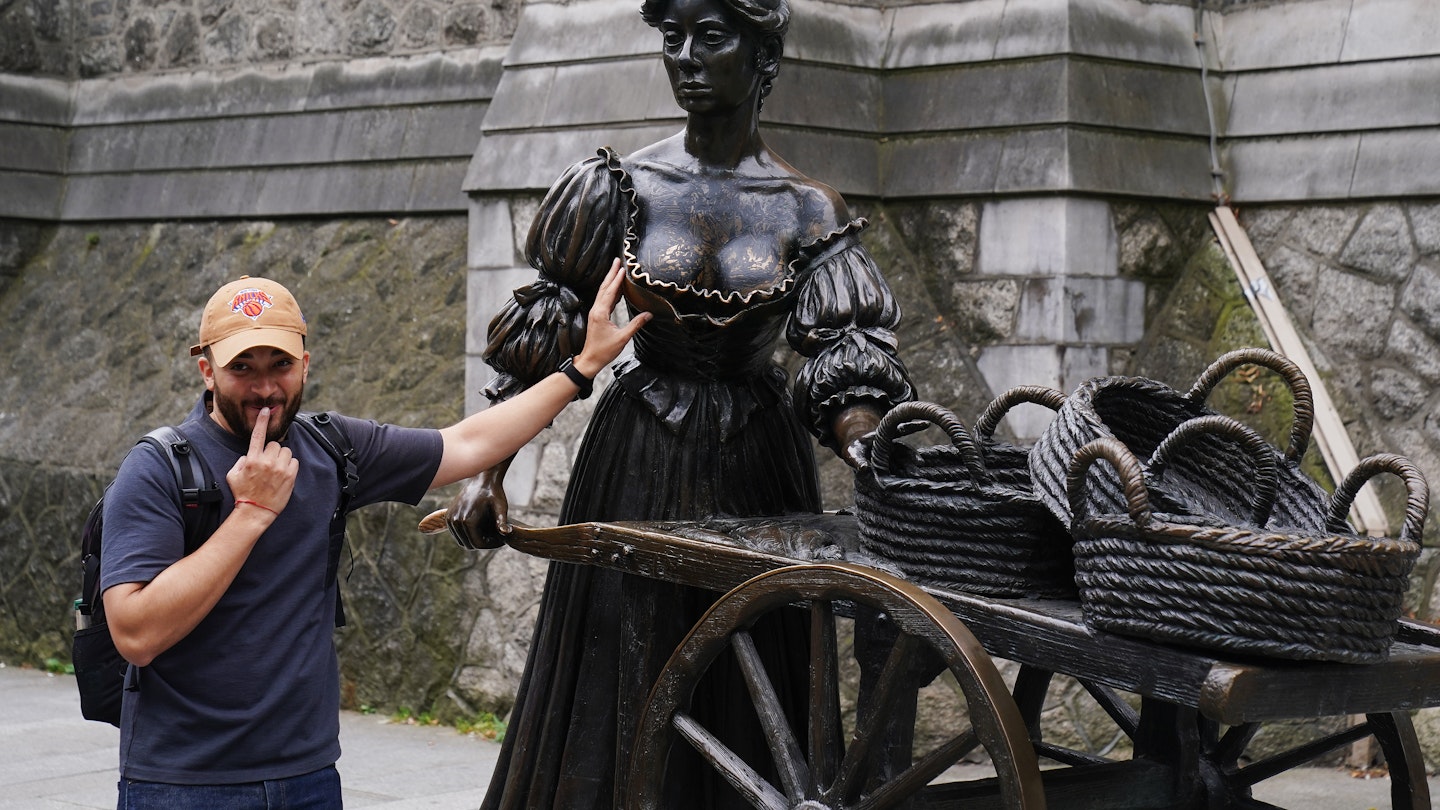Irish people are famously friendly and easygoing, yet certain behaviors can be quite off-putting. As thousands of visitors prepare to flock to Ireland from around the globe for St. Patrick’s Day, locals are asking tourists to refrain from one of the more dubious traditions: groping the breasts of Dublin’s iconic Molly Malone statue.
Situated on Suffolk Street in the heart of the city, the statue depicts a fictional fishmonger and the heroine of the well-known song featuring the lyrics, “Crying, ‘Cockles and mussels, alive, alive, oh.’”
Tilly Cripwell, a local singer who regularly performs near the statue, has initiated a campaign to end this “misogynistic” practice. She remarks, “People clamor around her, kissing her cheek and touching inappropriate areas. You wouldn’t see visitors rubbing Oscar Wilde’s statue for good luck, so why is it acceptable here?”
Consequently, the statue’s bosom has taken on a different shade of bronze, a testament to the frequent touching. Dublin City Council is considering measures to discourage such behaviors, as this statue was initially unveiled in 1988 to commemorate the city’s millennium.
1. Don’t Drink on the Streets of Dublin
While consuming alcohol in public may not be illegal throughout Ireland, it is prohibited within Dublin city limits. If you’re caught drinking outdoors, the gardaí — the Irish police force — may confiscate your beverages, ask you to vacate the area, or issue a fine of up to €500. This strict enforcement becomes even more pronounced during St. Patrick’s Day, with past instances seeing gardaí filling barrels with seized liquor in popular areas of the city.
2. Do Wait for Your Pint to Settle
Pouring a proper pint of Guinness is an art form. Rushing to drink immediately results in missing the full experience of enjoying this iconic stout. Allow the drink to “surge and settle” for a minute or two until the dark stout sinks beneath the creamy foam. This method not only provides the classic Guinness appearance but enhances the taste significantly.
3. Do Say Paddy, But Never Patty
In Ireland, the day is referred to as St. Patrick’s Day or “Paddy’s Day.” The nickname “Paddy” comes from the Irish name Pádraig, while “Patty” refers to a burger in local vernacular. Therefore, using the correct term shows respect for the cultural significance of this holiday.
4. Do Try Your Hand at a Cúpla Focail
Instead of the cliché “top o’ the morning,” make an effort to learn a few words of Gaeilge, the native language. Simple phrases like “sláinte” (cheers) or “slán” (goodbye) can enrich your experience and impress locals. Though some Irish names may be challenging to pronounce, attempting them demonstrates appreciation for the culture and local heritage.




